Reflecting on ATC 2024 - Pushing the Boundaries of Communication Technologies
Published:
Reflecting on ATC 2024 - Pushing the Boundaries of Communication Technologies
I recently had the privilege of attending the 2024 International Conference on Advanced Technologies for Communications (ATC 2024), which took place in Ho Chi Minh City, Vietnam, from October 17-19. As someone passionate about advancing communication technologies and Artificial Intelligence (AI), this conference provided an amazing opportunity to engage with industry leaders, researchers, and experts in the field. Here are some highlights and key takeaways from my experience.
A Vital Forum for Research and Innovation
ATC 2024 serves as a vital platform for researchers and innovators both in Vietnam and around the globe to exchange knowledge, share information, and present research results. The conference also aims to foster academic cooperation in the rapidly evolving field of communication technologies. This year’s conference was particularly noteworthy, having received an impressive 307 submissions from 682 authors. Out of these, 176 excellent papers were selected for presentation—each representing cutting-edge contributions to the fields of electronics, communications, and related technologies.
The conference organizers have always been committed to promoting an international forum for scientific and technological exchange. By providing this platform, ATC 2024 succeeded in bringing together Vietnamese and international scientists to share high-quality research and build collaborative networks. This environment for academic cooperation and innovation is not only crucial for advancing the field but also serves as a catalyst for future breakthroughs in communication technologies.
Keynote Highlights
One of the major highlights of ATC 2024 was the thought-provoking keynote sessions, which touched on current trends and the future landscape of communication technologies. Three sessions, in particular, stood out:
1. Artificial General Intelligence (AGI): Native Wireless Systems with Common Sense
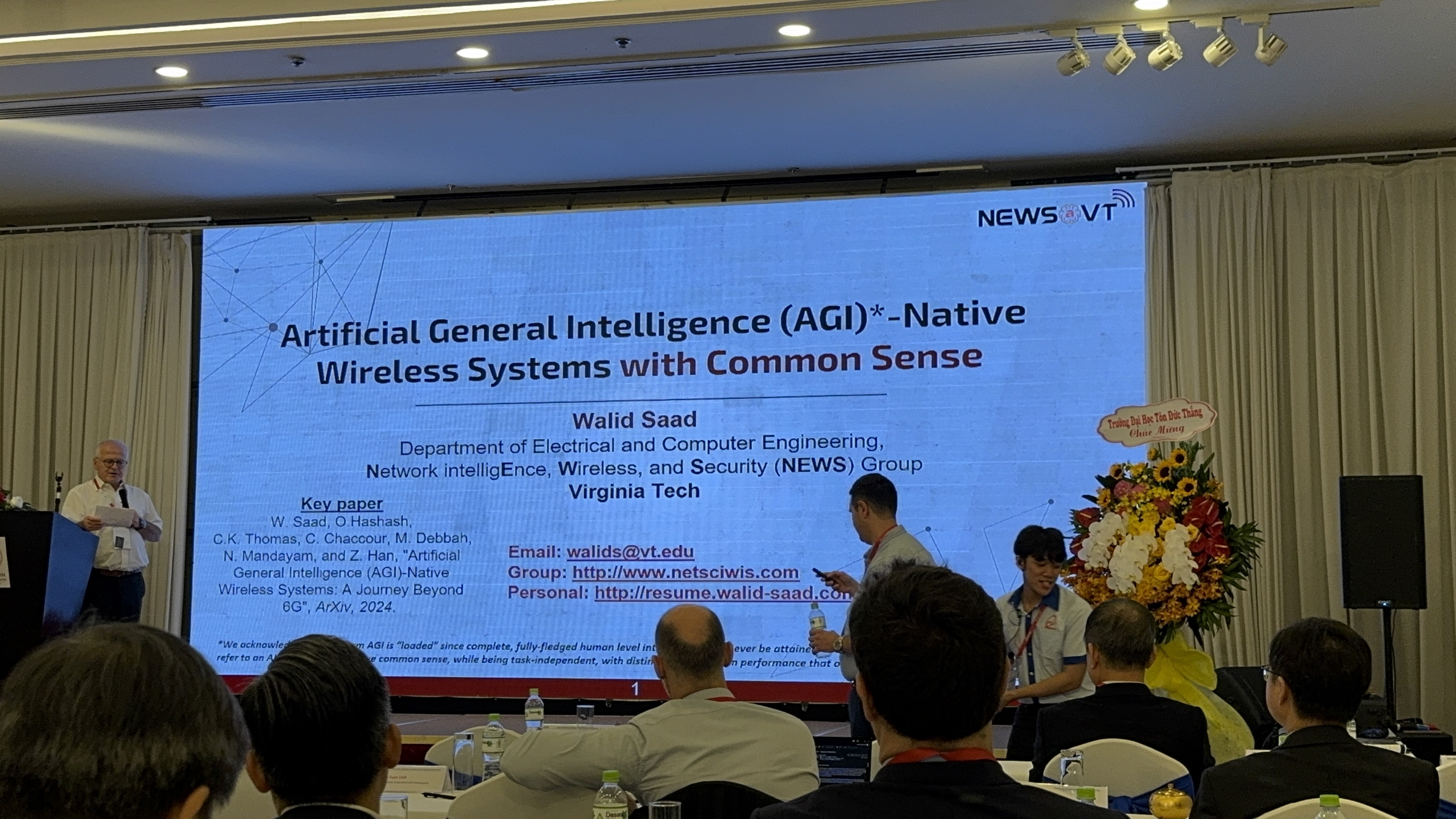
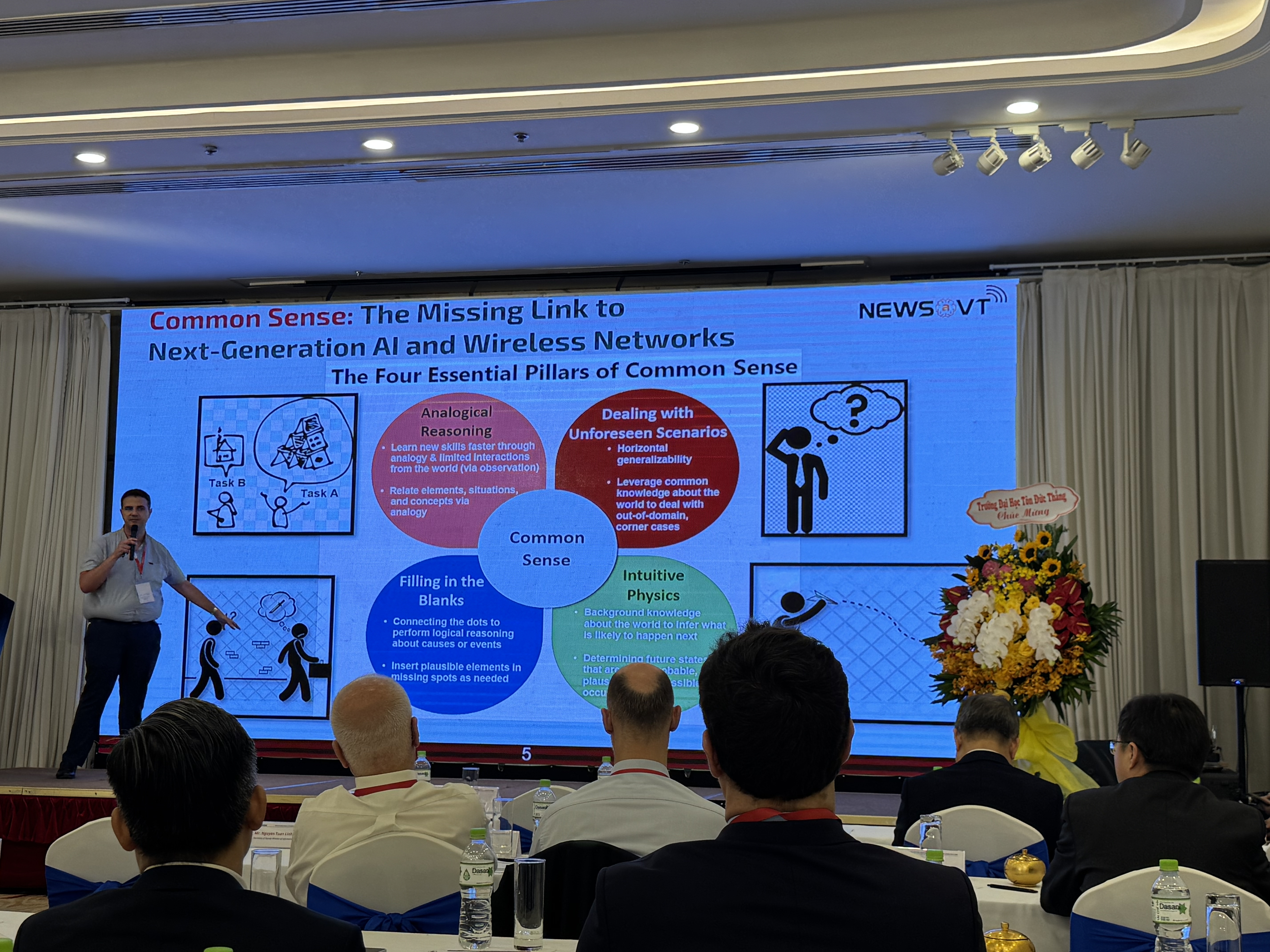
Delivered by Prof. Walid Saad from the Department of Electrical and Computer Engineering at Virginia Tech, this keynote focused on the potential of AGI in revolutionizing wireless communication systems
Prof. Saad emphasized that common sense is the key to unlocking the full potential of next-generation AI and wireless networks. He described common sense as the ability to reason, learn, and adapt based on everyday experiences—a capability that current AI systems lack. He proposed a framework with essential pillars that would enable AGI to exhibit this crucial human trait ;
- Analogical Reasoning - Learning new skills by drawing analogies from limited experiences and applying them to broader contexts.
- Filling in the Blanks - Connecting dots to reason about causes or events, enabling AI systems to make educated guesses in unfamiliar situations.
- Dealing with Unforeseen Scenarios - Leveraging prior knowledge and intuition to handle cross-domain problems, thus improving generalizability.
- Intuitive Physics - Using a background understanding of the physical world to predict outcomes and reason about plausible actions in real-time.
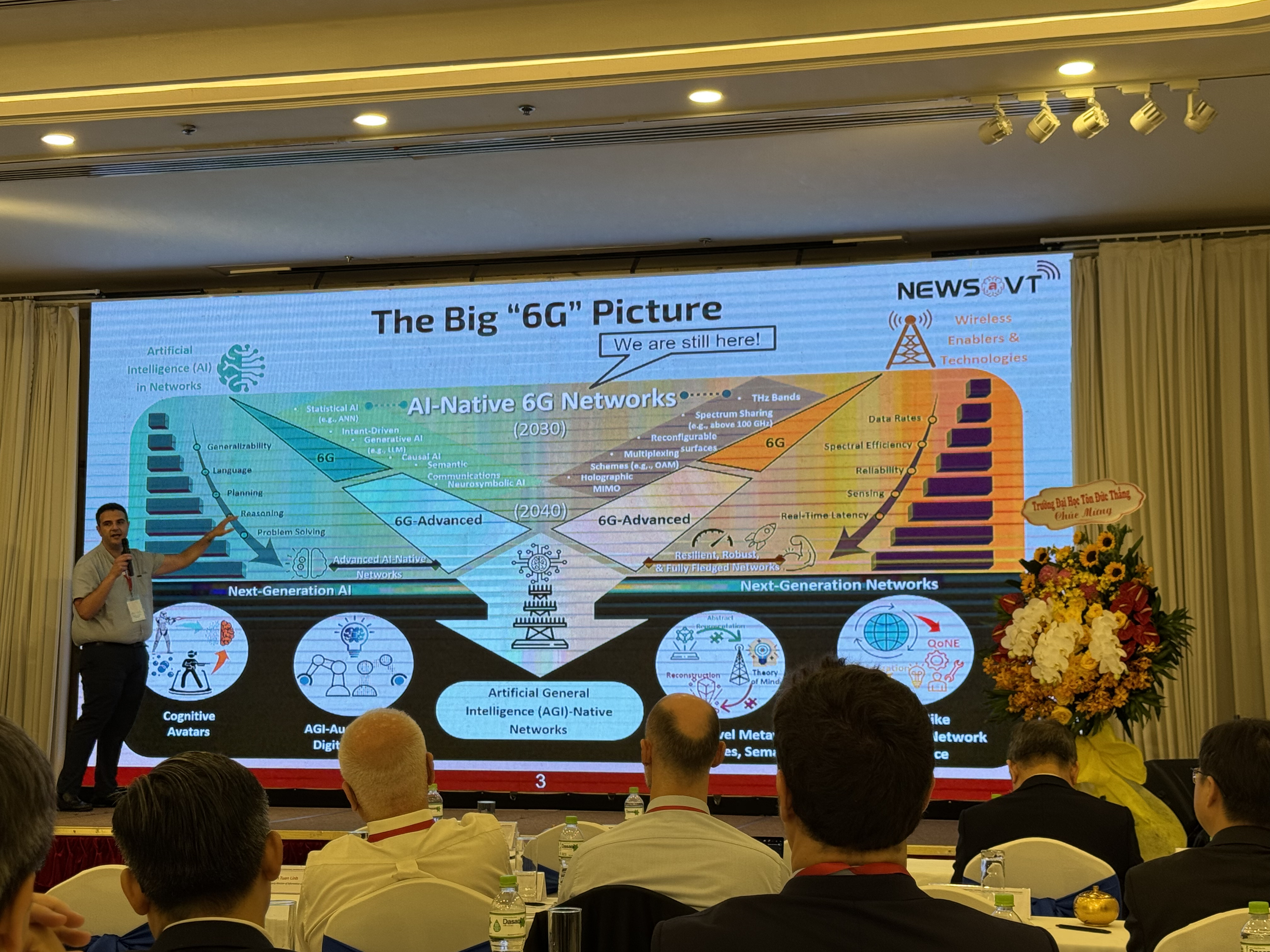
Prof. Saad outlined the vision for AI-Native 6G Networks, a futuristic concept in which wireless systems not only operate with enhanced speed, efficiency, and coverage but are also driven by advanced AI capable of reasoning and decision-making with “common sense.” The presentation emphasized how integrating AGI could enable wireless systems to autonomously manage complex tasks, handle unforeseen scenarios, and evolve to meet the growing demands of our increasingly interconnected world
2. Mega Constellations in 6G NTN: Trends, Technologies, and Vision
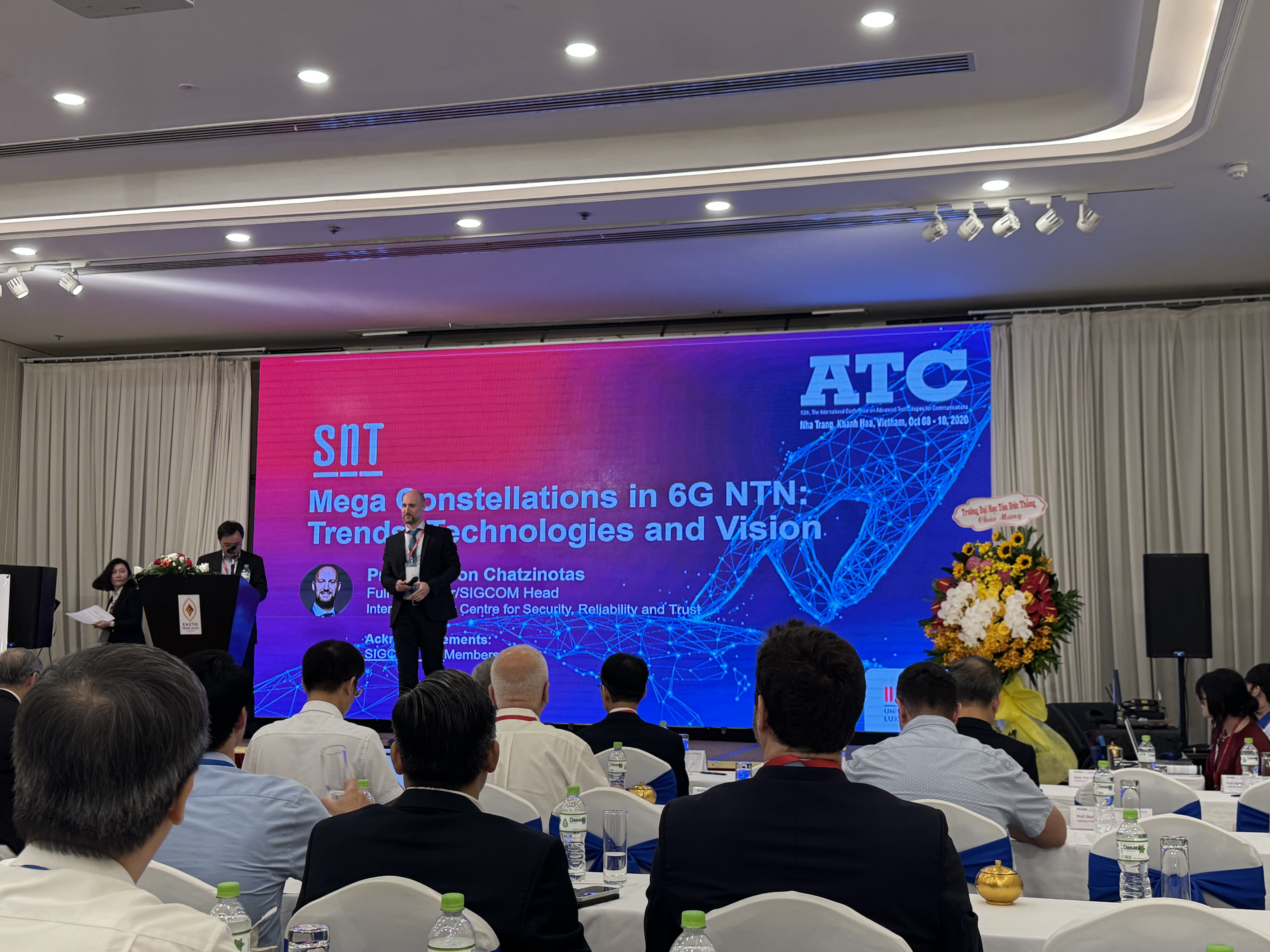
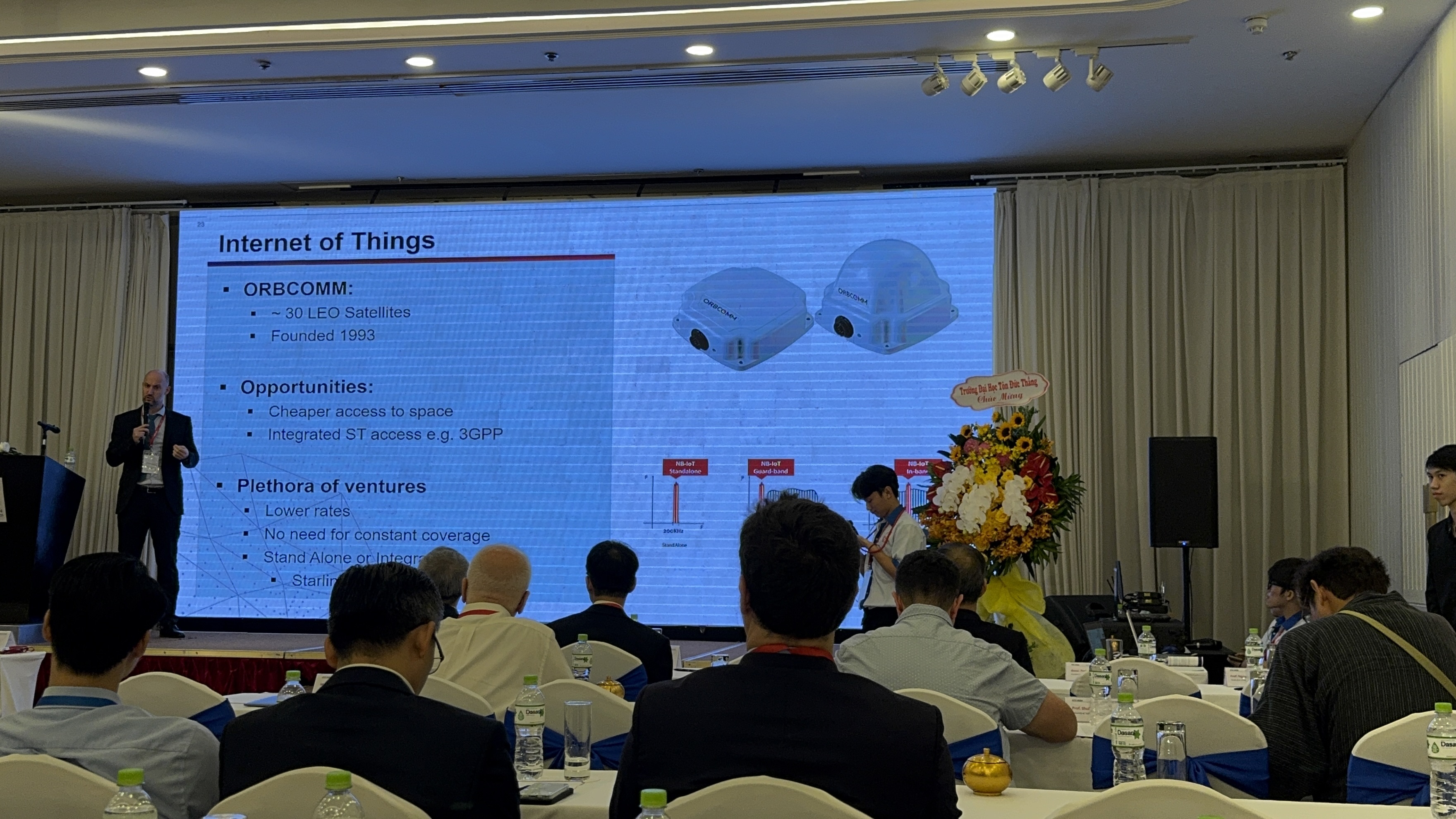 Delivered by Prof. Symeon Chatzinotas, an IEEE Fellow from the University of Luxembourg, this keynote explored how the convergence of satellite technology and 6G mobile communications will fundamentally reshape the way we think about connectivity.
Delivered by Prof. Symeon Chatzinotas, an IEEE Fellow from the University of Luxembourg, this keynote explored how the convergence of satellite technology and 6G mobile communications will fundamentally reshape the way we think about connectivity.
Prof. Chatzinotas introduced the concept of LEO (Low Earth Orbit) satellite constellations, focusing on solutions like ORBCOMM, which operates a network of approximately 30 satellites. These mega constellations will play a crucial role in providing seamless global connectivity, especially in areas where traditional terrestrial networks struggle to reach. The presentation highlighted key opportunities, such as:
- Cheaper access to space: Satellite deployment costs have significantly dropped, making it more feasible to scale up LEO networks.
- Integrated satellite-terrestrial (ST) access, with a focus on how technologies like 3GPP standards can be leveraged for direct integration into 6G networks.
Satellite IoT and NR Integration 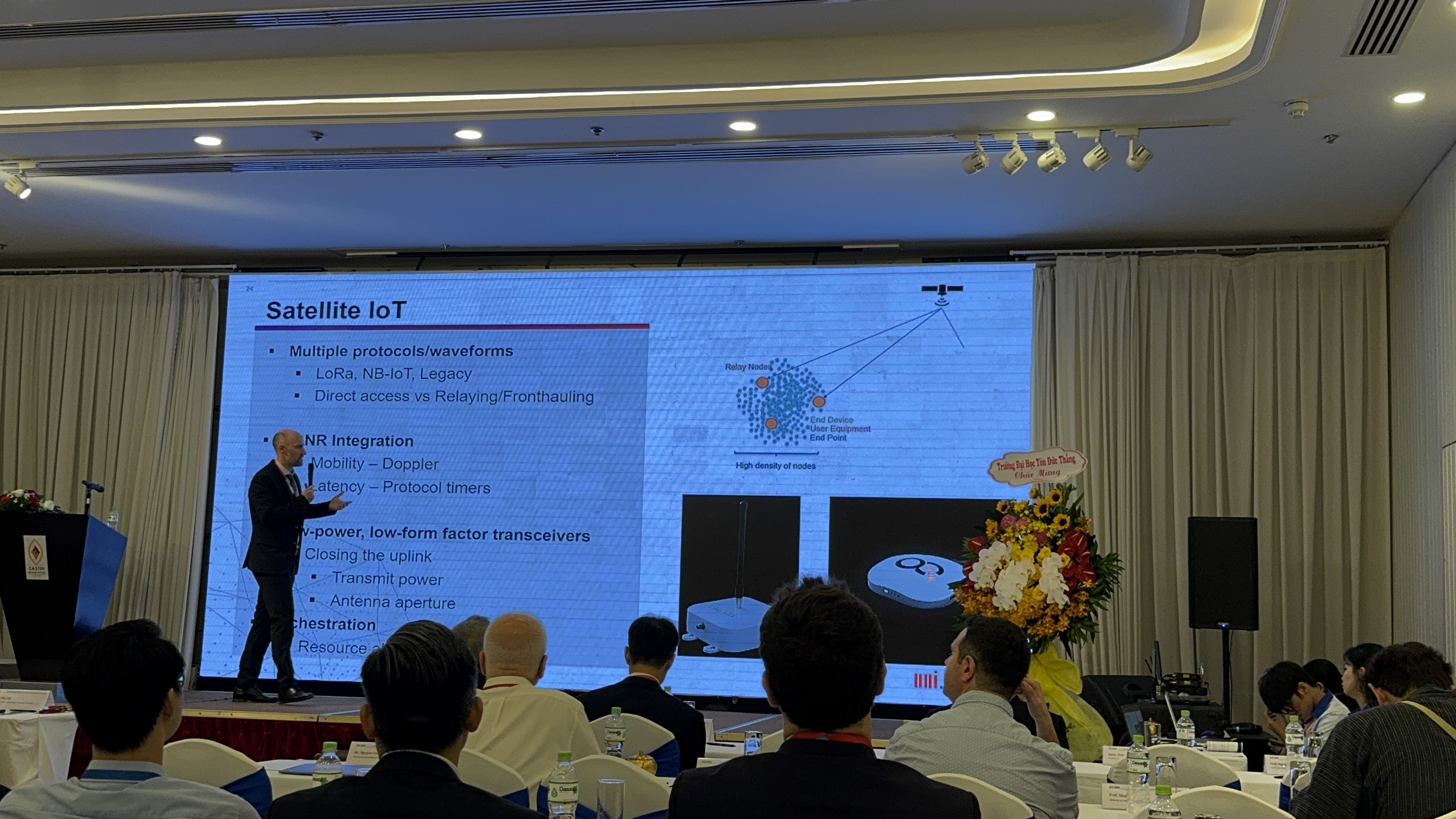
Prof. Chatzinotas explored how satellite constellations will integrate with the Internet of Things (IoT), utilizing multiple protocols like LoRa and NB-IoT to facilitate global, low-power communication. He stressed the importance of supporting both direct access to satellite networks and relay-based approaches, ensuring that devices can connect regardless of their proximity to terrestrial infrastructure.
Key innovations for the NR (New Radio) integration with satellite IoT include managing ;
- Mobility and Doppler shifts in satellite communications
- Latency requirements for time-sensitive applications
- Low-power, low-form factor transceivers, enabling energy-efficient uplink solutions
Networking and Learning
Beyond the impressive keynote sessions, ATC 2024 provided ample opportunities for networking and collaboration. I had the chance to meet and interact with fellow attendees from various backgrounds—academics, industry leaders, students, and technologists. The coffee breaks were as valuable as the sessions themselves, as they gave us the opportunity to discuss the keynotes, exchange ideas, and even brainstorm potential collaborations on future projects.
The panel discussions and group photo sessions also fostered a sense of community, as participants shared their perspectives on how we, as a global collective, can tackle the challenges in communication technologies. It was great to hear from others how they are applying cutting-edge research in AI, 6G, and wireless systems to solve real-world problems.
Looking to the Future: What’s Next?
As I reflect on my experience at ATC 2024, I am filled with excitement and optimism for the future of communication technologies. The conference not only highlighted the incredible strides that have been made but also pointed to the immense possibilities that still lie ahead. From integrating Artificial General Intelligence into wireless systems to building a global, secure 6G network, the future of communications is bright, fast-moving, and full of potential.
